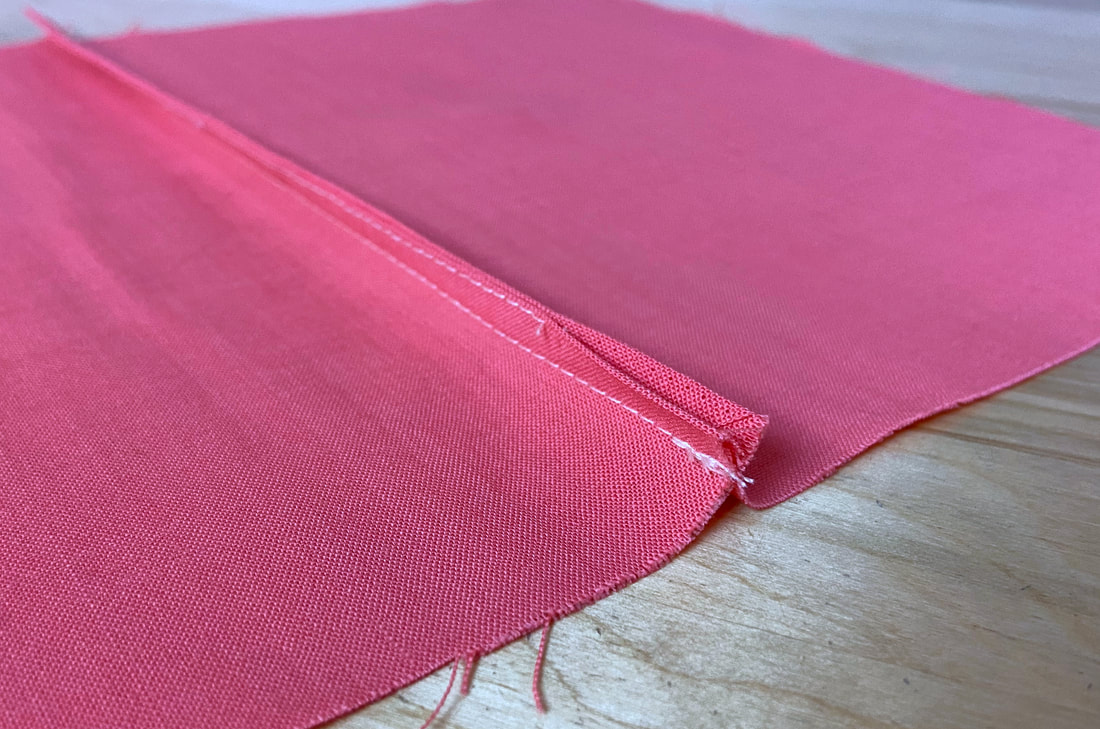What Is A Mock French Seam
As the name may have hinted, a mock French seam looks very similar to a French seam. However, the steps for constructing a mock French seam are in fact quite different, but a bit simpler, especially for sewing beginners.
Just like a regular French seam, a mock French seam is completed with two separate stitches. However, in a mock French seam, the seam is stitched as you would any regular seam: face sides touching and following the designated seam allowance. In contrast, a regular French seam application requires that fabric wrong sides are aligned and stitched at half the seam allowance first, before proceeding to the final, second stitch.
In a mock French seam, the seam allowance does not always require trimming unless it is very wide and bulky.
In a regular French seam, the width of the finished enclosed seam allowance is conventionally ¼”- the same is true for a mock French seam finish. The narrower seam allowance ensures increased flexibility, and works great with lightweight, sheer fabrics.
A mock French seam is used when regular French seams are difficult to apply. For example, along curved seam allowance edges or as a last-minute finish where the seams have already been sewn in a conventional manner (with the face sides touching). Mock French seams are also a quicker finish for medium weight, non-sheer garments were a more professional self-enclosed application is desired.
A mock French seam is especially useful if the inside of the seams will be visible on the outside of the garment.
You can distinguish a mock French seam from a regular French seam by looking at the finished seam allowance on the wrong side of the garment.
A mock French seam has a visible topstitch along the edge of the folded seam allowance.
A regular French seam on the other hand, has a seamline corresponding to its folded edge, and features no visible topstitching.
Applying A Mock French Finish To A Straight Seam
Assuming the seam allowance is ½”:
1. Align the seam edges with the face sides touching. Pin and stitch the seam at the designated seam allowance (½” in this example). You should treat this first stitch as you would any regular seam.
2. With wrong side facing up, turn the seam allowance edges in, towards the stitched seamline at a ¼” distance. When brought together, the seam allowance folded edges should align perfectly as shown above.
The easiest way to accomplish this is to fold each edge individually, and iron as you fold to crease the resulting fold line.
Since the seam allowance in this example is ½”, the edge is folded at exactly halfway. The seam allowance raw edges meet at the seamline which in this case, provides a guide in the folding process while also eliminating the need to measure while folding.
3. Once both seam allowance edges are ironed and folded in position, bring them together such that the folded edges align. Press the folded seam allowance layers one more time to stabilize the edges.
4. Insert a few pins through the folded seam allowance edges or better yet, hand baste to keep them more securely in place.
5. Next, machine stitch the folded edges together right next to the fold lines as shown. The topstitch application will enclose all seam allowance raw edges, resulting in a finish that looks very similar to a regular French seam.
Once topstitched, remove the temporary hand basting using a seam ripper.
6. Iron the enclosed seam allowance in the direction it was stitched.
7. To complete, iron the entire finished seam with the seam allowance pointing to a single direction- preferably towards the back of the garment.
















